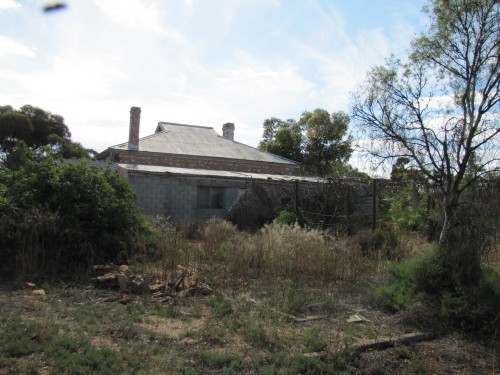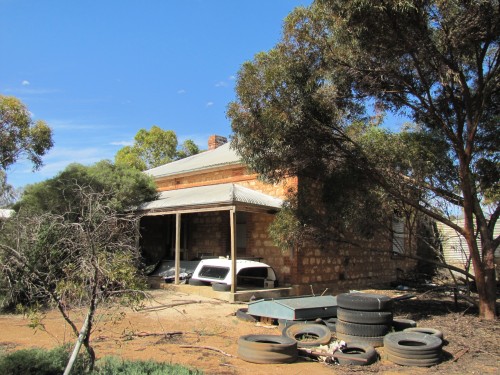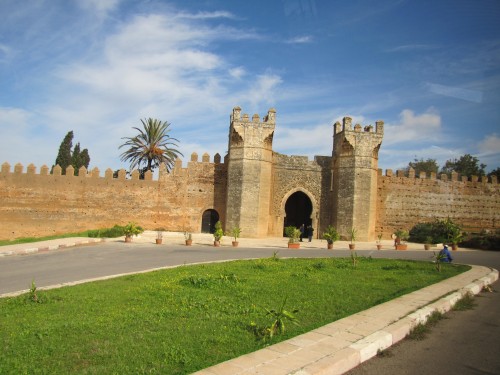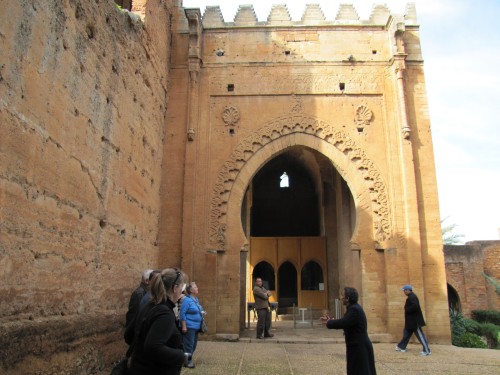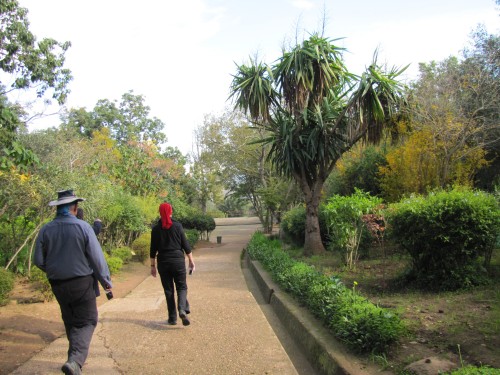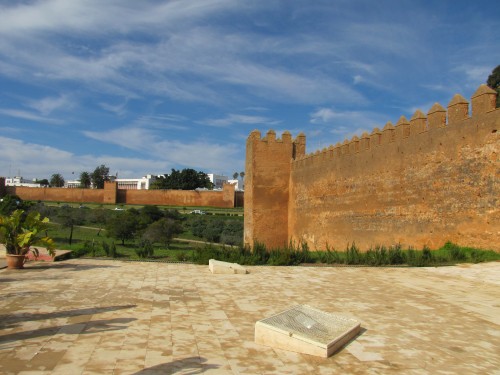Where I grew up at Taplan
Taplan is a small farming community about 30km south east of Loxton in the Murray Mallee region of South Australia. The town was established in the early 1900s and was the result of clearing much of the mallee (eucalyptus) scrub over many years of hard work. These days the area is mainly a cereal growing area – wheat, barley, canola and some oats. Some sheep and cattle are also kept by local farmers.
I grew up in this town in the 1950s and 60s. Over recent days on this site I have written about school life and other aspects of life in this small community. Today the town is a mere shadow of its former self. Many houses are now empty, including the one shown in today’s photos, the Institute Hall and the primary school are now private residences, the post office and store have closed and the only church (Lutheran) often has only half a dozen people attending. The railway ceased operating some years ago too.
My parents moved to this district when they married in the late 1920s. My father farmed the family land, initially about 600 acres but later over 1000 acres as he bought adjoining properties. My brother bought another farm a few miles to the north when he married. Later, when another brother married he bought the original farm from my father. Both of these properties have since been bought by my nephew who has expanded even further with several more properties bought in recent years. It seems quite likely that one or more of his three sons will soon be working these properties with their father.
The old homestead shown in today’s photos is where I grew up from 1947 until my parents and I moved to Loxton in 1965. During those years I enjoyed a wonderful childhood playing around the house and helping my mother in the garden. Our extensive garden included many fruit trees, such as:
- oranges
- lemons
- mandarins
- nectarines
- apricots
- peaches
- pears
- loquats
- figs
- grapes
- passion-fruit
In the vegetable garden we grew:
- carrots
- cauliflower
- cabbage
- lettuce
- pumpkins
- watermelons
- rockmelons
- beetroot
- tomatoes
- turnips
- and probably quite few I have forgotten.
We had a small herd of cows but I never had the job of milking them. My job was to take the milk, pour it into a separator and turn the handle until the cream was separated from the milk. Sometimes I helped my mother make homemade butter. Any leftover milk was given to the small herd of pigs which were also our source of meat. Very rarely did we eat our own ham or bacon. More often it was either poultry – such as chicken or duck – or mutton from sheep which my father would butcher. Any excess cream was sold, the large cans of cream being transported to Murray Bridge (where I now live) by train in refrigerated vans.
The chickens – we always called them “chooks” – were largely my responsibility. While I did provide them with some wheat or other grain to eat, most of the time the chooks foraged in the garden, around the sheds or even out in the nearby paddocks. We invented “free range eggs” before it was fashionable.
My job every evening was to “look for the eggs”. I didn’t just have to gather the eggs from the laying boxes in their shed, I actually had to actively search out where they were laying. This could be anywhere in the implement sheds, in farm machinery, behind boxes, under bushes – I had to use my keenly developed eyesight to watch where the hens were so I could find their eggs.
I was not always as alert as the hens were cunning. They would lay their eggs in a secret place until they had ten or fifteen, and then they would go “broody”. I quickly learned that the peck of a broody hen hurt, so often I would leave them be. A few weeks later a new batch of fluffy chickens would grace our farm yard. In this way we replenished those we had eaten. Of course we always had far too many eggs and no matter how many wonderful cakes and biscuits mum made, there was always an excess, and these I had to wipe clean with a damp cloth before packing them in specially designed crates. These crates were taken to the nearby railway station and transported off to markets in Adelaide.
The area immediately surrounding the house and sheds of our homestead consisted of a large patch of native mallee (eucalyptus) scrub. I am much younger than my three brothers who were never much interested in playing with me when I was growing up, except when I was a baby. During my school days I had to entertain myself during school holidays and on weekends. The nearby scrub kept me very entertained as I explored it, developing a love of the environment which persists to this day. I now own a little patch of mallee scrub where I now live in Murray Bridge. You can see photos of birds seen around my home on Trevor’s Birding.
The last photo I will share today is another view of the house on the farm where I grew up. It is now a ruin; my brother built a new house just a few metres north of this one a few years after he married. It is sad to see so many similar old homes like this one going to ruin, but that is just the way things are; there is no use bemoaning the fact that maintenance on old houses is expensive, and there is just not the concentration of population in rural Australia to keep houses like this occupied.
Chellah, Rabat, Morocco
During our short visit to Rabat in Morocco we visited the Chellah district, including this old, impressive fortress. The walls surround an old part of the city and include a magnificent garden as well as the Roman ruins of Sala Colonia. (Photos of these ruins in a few days’ time.)
I found that these impressive fortress walls quite intriguing; we have nothing like them in our young country here in Australia.
Addis Ababa Fistula Hospital part 3
I have to admit that Addis Ababa is not the most beautiful city I’ve ever visited. In fact, many parts are quite dirty with much rubbish lying around in streets and on construction sites, poorly maintained roads, less than beautiful buildings and plenty of pollution in the air and waterways. I sensed during my visit there last December that attempts are being made to clean up the environment and general facilities but the sheer mass of people they are dealing with makes this a mammoth task.
It was therefore a very pleasant surprise to visit some private homes to see what could be achieved. Even more delightful was our visit to the Addis Ababa Fistula Hospital (click here to read what I wrote last week about our visit). The buildings in this wonderful hospital are extremely well maintained, clean and inviting to the traumatised patients. The grounds and gardens are a haven providing a serene environment for the women recovering from obstetric fistula, one of the most distressing medical conditions I have ever read about.
Here is my challenge: you can help these women to recover by donating to the work. Click here for more details.
Addis Ababa Fistula Hospital part 2
Last week I wrote about our visit to the Addis Ababa Fistula Hospital in Ethiopia.
Today I present a few more photos taken around the gardens and buildings of this wonderful hospital, a place changing the lives of so many local women in an amazing way. To read more, click here.
A visit to a native garden part 2
As I wrote a few days ago my wife and I were invited to a friend’s garden a while back to take photos of flowers and cuttings for propagation. She and her husband had collected and grown a wide range of Australian native plants over many years; every spot in the property was utilised. They were about to sell and move elsewhere so we jumped at the opportunity for one last look.
I was particularly taken with the water features in the beautiful pots shown above. Such a simple way to grow, feature and display plants one does not usually see in your average house garden.
My next post in two days’ time will feature more flowers – and one of my feathered friends.
